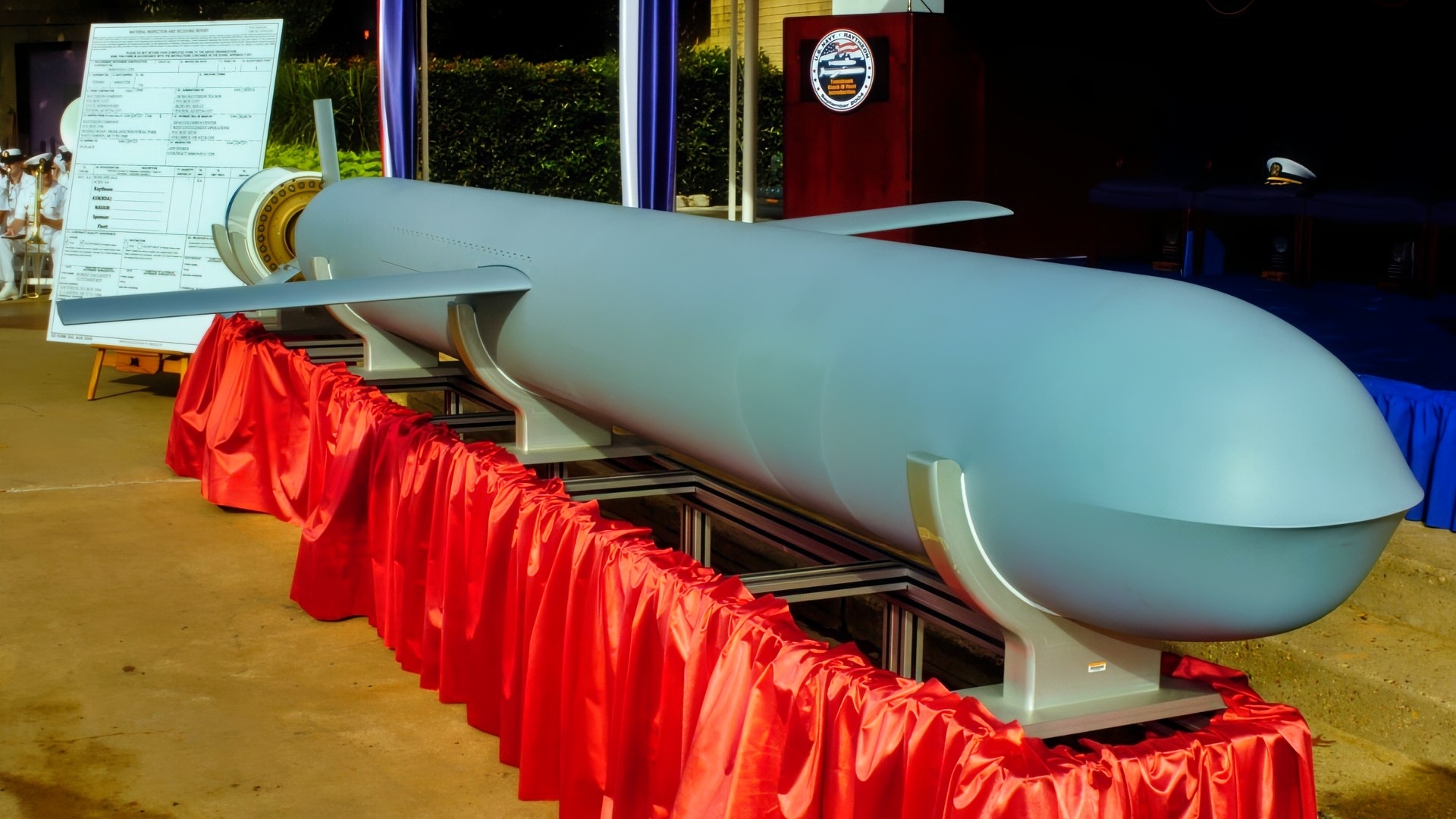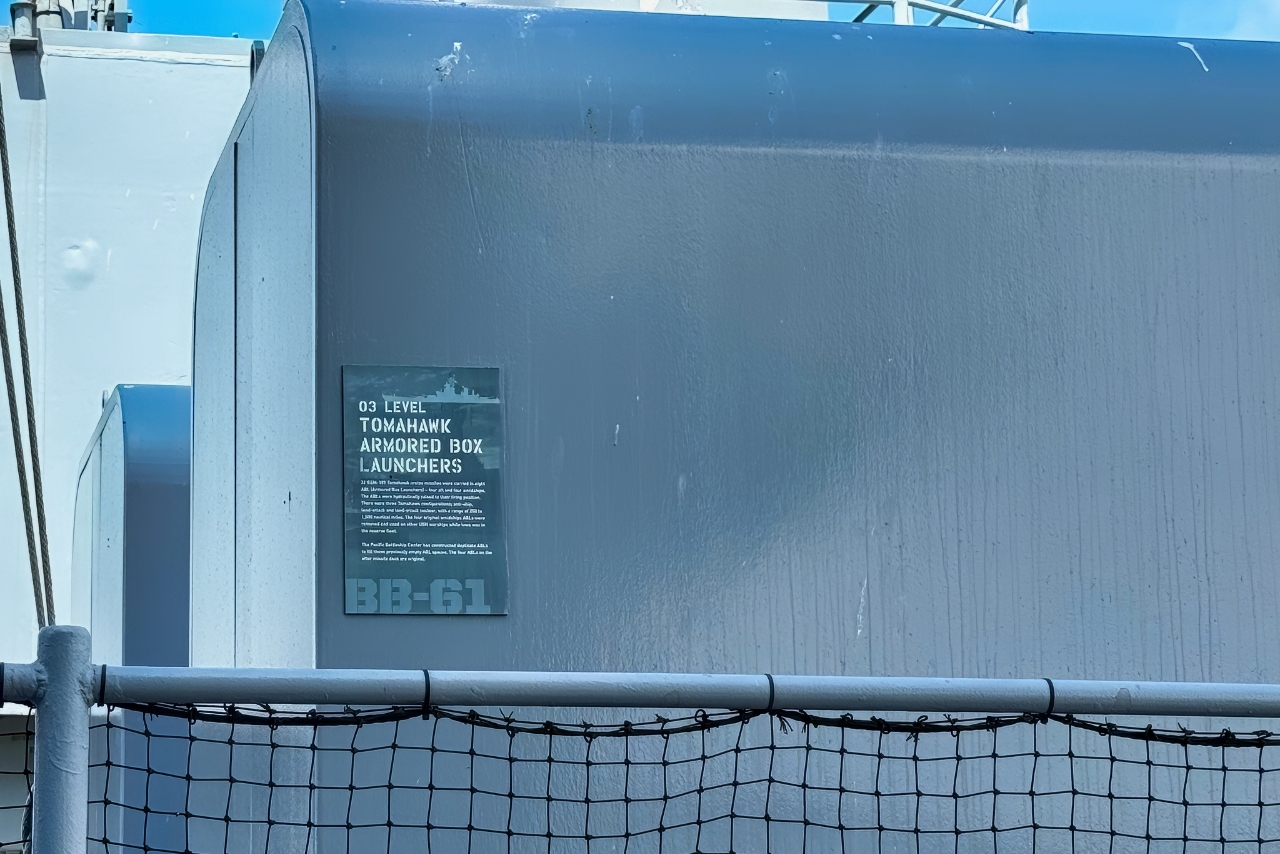Key Points and Summary – The U.S. Navy is rapidly fielding its new “game-changer” anti-ship weapon, the Maritime Strike Tomahawk (MST).
-This Block Va variant features a new seeker that allows it to track and destroy moving warships from over 1,000 miles away.

Tomahawk Block IV Missile. Image Credit: Creative Commons.
-Deployed from the existing launch systems on destroyers and submarines, the MST provides a cost-effective way to add long-range, carrier-killing capability to a huge portion of the fleet.
-The weapon is seen as a direct counter to China’s growing navy, turning the tables by making Chinese aircraft carriers vulnerable as they operate further from shore.
Maritime Strike Tomahawk Anti-Ship Missile, America’s Carrier Killer
The US Navy’s new Maritime Strike Tomahawk (Block Va) is designed as an anti-ship missile and can pose a significant threat to China’s aircraft carriers.
This variant of the Tomahawk missile features a multi-mode seeker that allows it to track maneuvering warships and receive in-flight targeting updates to engage moving targets at sea.
This enhanced capability, which can also be employed by submarines, gives the Navy a new way to counter numerically superior fleets, such as China’s growing naval force.
Meet The Maritime Strike Tomahawk
The Maritime Strike Tomahawk (MST) is an anti-ship variant of the Tomahawk cruise missile, designated Block Va, that provides the US Navy with long-range precision strike capability against enemy vessels, significantly enhancing its offensive power in maritime conflicts, particularly in the Indo-Pacific.

Tomahawk Launch. Image Credit: Creative Commons.
Launched from surface ships and submarines, the MST uses advanced guidance systems and a passive seeker to engage moving targets at sea, addressing limitations of earlier anti-ship missiles.
The US Navy is rapidly fielding this new weapon system, having achieved Early Operational Capability (EOC) in late Fiscal Year 2025, to bolster its deep-strike and anti-surface capabilities.
Fleet Forces commander Adm. Daryl Caudle characterized the new Tomahawk as a “game-changer” against a numerically superior Chinese fleet. The Navy is fielding these maritime Tomahawks on its Arleigh Burke-class destroyers.
Once testing is complete, submarines will begin carrying them in early 2026, said Tomahawk program officials. Raytheon (RTX Corp) will upgrade existing Block IV Tomahawks into the anti-ship variant, with up to 1,302 missiles procured for this effort.
Raytheon says that the Block Va missile will extend its service life by 15 years, featuring a modernized TACTOM with upgraded navigation and communication, the ability to strike targets at sea, and warheads that enhance its diversity.
By using the destroyers’ existing vertical launch systems, the Navy quickly adds a powerful anti-ship capability without building an entirely new missile.

USS Iowa Tomahawk Box. National Security Journal Photo.
China Has Long-Touted Its Anti-Ship Missiles, Now The Tables Have Turned
China possesses significant standoff weaponry like the DF-21D and the DF-26B missiles, which could pose a serious threat to American carrier strike groups, in part thanks to the Chinese saturation strategy against American surface vessels.
The Chinese now have three carriers with a fourth in construction. Currently, they operate close to their own shores, which offers a blanket of protection from US airpower due to the plethora of anti-aircraft systems as part of their A2/D2 system.
Some military analysts claim that Chinese air operations, which the US has perfected for more than 80 years, are still in their infancy, and in many exercises, Chinese aircraft take off from and land on shore.
Night operations and operations in bad weather are simply a walk in the park for American carrier operations, as are continuous flight operations, which the Chinese haven’t yet mastered.

Puget Sound Naval Shipyard, Wash. (Aug. 14, 2003) — Illustration of USS Ohio (SSGN 726) which is undergoing a conversion from a Ballistic Missile Submarine (SSBN) to a Guided Missile Submarine (SSGN) designation. Ohio has been out of service since Oct. 29, 2002 for conversion to SSGN at Puget Sound Naval Shipyard. Four Ohio-class strategic missile submarines, USS Ohio (SSBN 726), USS Michigan (SSBN 727) USS Florida (SSBN 728), and USS Georgia (SSBN 729) have been selected for transformation into a new platform, designated SSGN. The SSGNs will have the capability to support and launch up to 154 Tomahawk missiles, a significant increase in capacity compared to other platforms. The 22 missile tubes also will provide the capability to carry other payloads, such as unmanned underwater vehicles (UUVs), unmanned aerial vehicles (UAVs) and Special Forces equipment. This new platform will also have the capability to carry and support more than 66 Navy SEALs (Sea, Air and Land) and insert them clandestinely into potential conflict areas. U.S. Navy illustration. (RELEASED)
“The continuous operation of its carriers sits at the very core of what makes the U.S. military absolutely preeminent,” said Singapore-based defense analyst Alexander Neill.
But they have been testing the waters lately, trying to assert their power projection beyond the First Island Chain, operating further from their protective umbrella of shore-based defenses. Now, their carriers can also be the hunted.
Chinese Carrier Vulnerabilities
Chinese aircraft carriers are highly vulnerable due to their smaller air wings, lack of combat experience, weaker defensive escort capabilities (especially in anti-submarine warfare), and conventionally-powered, limited range, which contrasts with the advanced U.S. nuclear carriers.
Their main vulnerability lies in anti-ship and anti-submarine missiles, hypersonic weapons, and the overall complexity of operating a carrier strike group effectively. The Tomahawk Block Va was designed precisely for this.
The US Navy’s Virginia-class submarines are some of the most difficult-to-detect submarines in the world. They possess a potent strike capability, afforded by their extensive array of Tomahawk cruise missiles. And beginning early next year, the Block Va will be employed by the Virginia-class attack boats.
The Block Va upgrade complements other ship-killer systems, such as the new Long-Range Anti-Ship Missile (LRASM), providing the United States with more options and more ordnance in the event of war with China.

AGM-158 Extreme Range LRASM. Image Credit: Industry Handout.
The timing aligns with the Navy’s broader strategy for the Asia-Pacific region. China’s navy is growing fast, and officials emphasize the need for high-end strike power over simply matching ship numbers. The anti-ship Tomahawk adds depth to U.S. naval strike forces, alongside carrier air wings, drone swarms (the “Replicator” program), and submarine torpedoes.
The Maritime Strike Tomahawk (MST) is widely considered to be a “game-changer” for the U.S. Navy. It will provide a long-range, anti-ship capability to destroyers and submarines, enabling them to target moving vessels.
Its ability to operate from the entire surface and submarine fleet significantly boosts deep-strike power. It offers a crucial advantage against numerically superior fleets, such as China’s, by providing a 1,000-mile standoff weapon to strike enemy ships.
About the Author: Steve Balestrieri
Steve Balestrieri is a National Security Columnist. He served as a US Army Special Forces NCO and Warrant Officer. In addition to writing on defense, he covers the NFL for PatsFans.com and is a member of the Pro Football Writers of America (PFWA). His work was regularly featured in other military publications.
More Military
Canada’s F-35 Fighter Program Has Passed the Point of No Return
USS Oriskany: The Navy Essex-Class Aircraft Carrier That Was Sunk On Purpose
Nimitz-Class Nuclear Aircraft Carrier USS John C. Stennis ‘Out Action’ for 5 Years
Australia’s Mogami-Class Frigate Buy from Japan Is a Big Deal
The F-14 Tomcat Fighter Could Stop Enemy Tanks In Their Tracks










